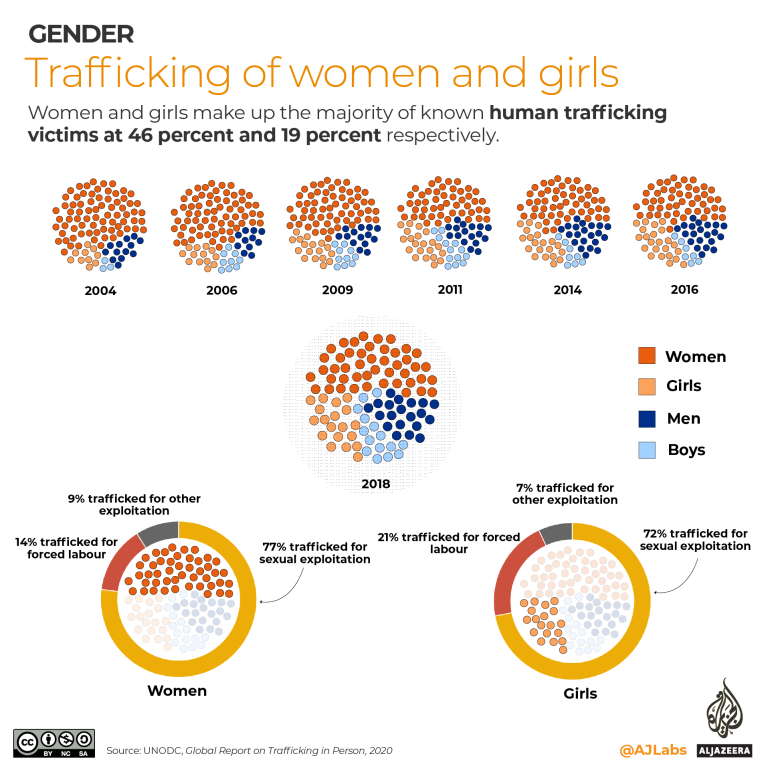Infographic: Mapping violence against women
On the International Day for the Elimination of Violence Against Women, a series of graphics show how prevalent male violence against women and girls worldwide.

November 25 is the International Day for the Elimination of Violence Against Women.
The term “violence against women” encompasses forms of male violence against women and girls, including intimate partner abuse, sexual harassment, human trafficking, female genital mutilation (FGM) and child marriage.
Keep reading
list of 4 itemsMapping Israel-Lebanon cross-border attacks
Eid Mubarak: Hear greetings in different languages
When is Eid al-Fitr 2024 and how is it celebrated?
Since the COVID-19 pandemic began early last year, one in three women say they or someone they know has experienced some form of violence, according to data from 13 countries in a new United Nations report.
Thursday also marks the start of 16 days of activism leading up to December 10, the International Human Rights Day, whose theme this year is “Orange the World: End Violence against Women Now!”
The five infographics below show how prevalent male violence against women is around the world.
Intimate partner abuse
Nearly one in three women have been physically, sexually or emotionally abused by their current or former partner at least once in their life, according to a report published this year by the World Health Organization and the UN.
The situation is worst in Afghanistan, where nearly 34 percent of women and girls above 15 have been abused by a partner, data analysed from UN Women show.
Five of the 10 countries where women and girls are abused the most are in Africa. In the Democratic Republic of the Congo, 32 percent of women and girls aged 15 or above have been abused by their intimate partners.

Femicide
Some 87,000 women were murdered in 2017, according to the most recent global homicide report by the United Nations Office on Drugs and Crime (UNODC).
The rate of intimate partner/family-related homicide was highest in Africa.

Trafficking
Most of the known human-trafficking victims are women and girls, at 46 and 19 percent respectively, according to UNODC.
Seventy-seven percent of women are trafficked for sexual exploitation, while 14 percent are trafficked for forced labour.
Seventy-two percent of girls are trafficked for sexual exploitation, 21 percent are trafficked for forced labour.

Forced child marriages
Child marriage is prominent in several regions across Africa and in South Asia.
In Africa, Niger has the highest prevalence of child marriage, with 76 percent of women aged 20 to 24 today who had been married off before they were 18 years old.
South Asia also has a high proportion of child marriage, with 28 percent of girls forced into marriage before their 18th birthday and 7 percent before their 15th.

Sexual violence in conflict
Some 550 of 638 recorded instances of sexual violence against civilians in conflict zones have been women, according to figures by the Armed Conflict Location and Event Data Project since January 2020.
Sexual violence in conflict and conflict-related sexual violence includes war-time rape and crimes perpetrated by armed and organised actors.
Africa accounts for the largest number of instances with 376 incidents, the most happening in the DRC, with 135 events mostly perpetrated by “unidentified armed groups”.
